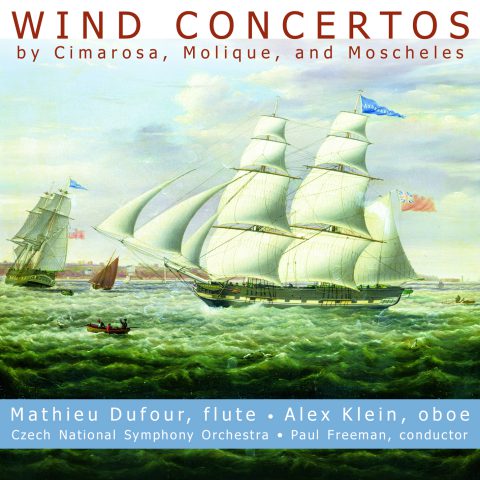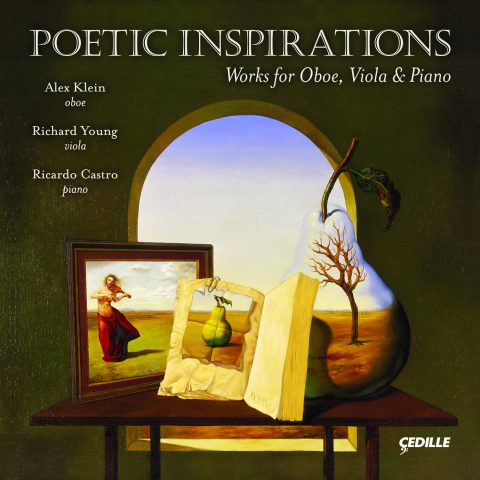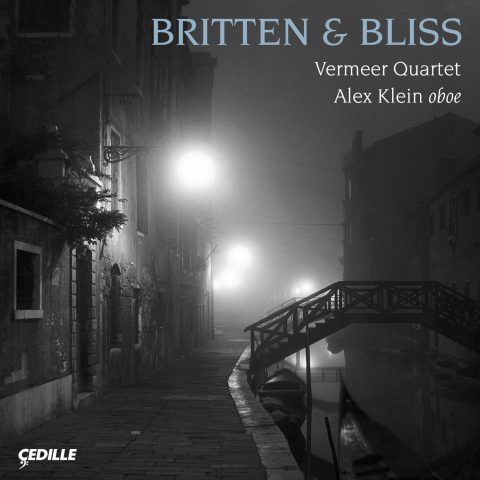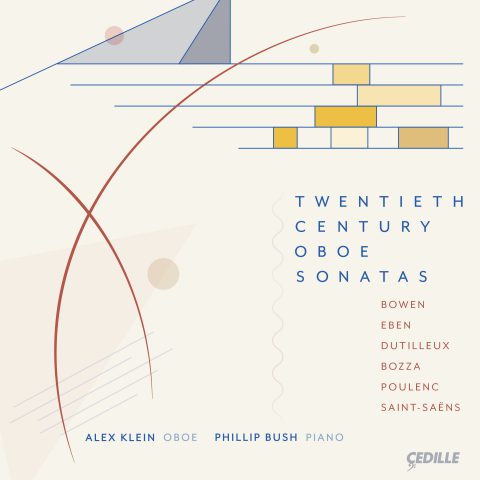Store
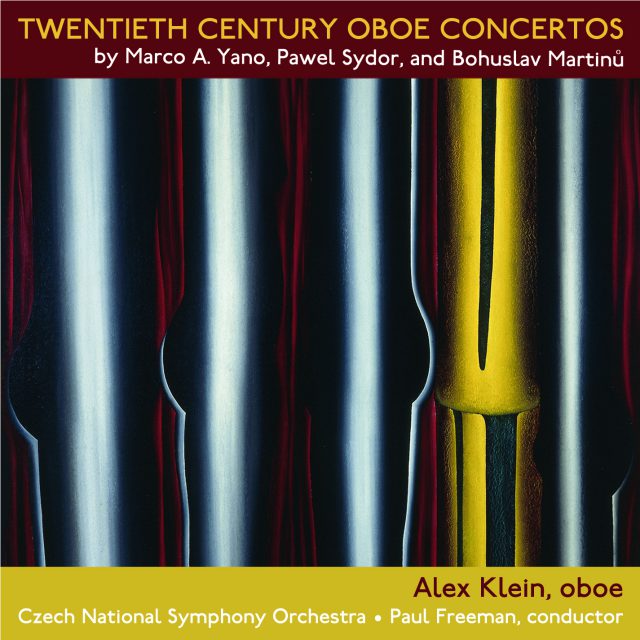
Alex Klein presents world premiere recordings of two works written expressly for him: fellow Brazilian native Marco Aurélio Yano’s vibrant and exotic Oboe Concerto (1991) and Polish composer Pawel Sydor’s dramatic “Virtuti Militari” (1992), a musical fable of individual heroism under social repression. Completing the program is a cornerstone of twentieth-century oboe repertoire, Bohuslav Martinu’s 1955 Concerto: a thoroughly distinctive, neoclassical delight.
Preview Excerpts
BOHUSLAV MARTINU (1890-1959)
Concerto for Oboe and Small Orchestra
PAWEL SYDOR (b. 1970)
Artists
Program Notes
Download Album BookletBohuslav Martinu: Concerto for Oboe and Small Orchestra (1955)
Notes by Andrea Lamoreaux
During the last decade of the 19th century in the ancient Bohemian town of Policka, rooms at the top of the church tower served as home for the family of a man employed as the town shoemaker, bell-ringer, and fire warden. His son, a sensitive, artistically inclined boy, later expressed in music the sense of space he gained from the views afforded by that tower’s windows.
This was Bohuslav Martinu° (1890–1959), one of the outstanding Czech composers of the modern era. Extraordinarily prolific in all fields of musical endeavor, from opera to sonatina, he wrote in a basically tonal, neo-Classical style that is distinctively his own, showing similarities to the work of composers who influenced him — Stravinsky, Debussy, Roussel — but belonging in the end to no clearly defined school or trend.
Martinu’s life was characterized by constant wandering and an essential physical and psychological homelessness. Despite this, he never lost interest in the musical traditions of his native Central Europe: In the last decade of his life, astonishingly productive years even in the face of serious illness, he returned nostalgically to his Bohemian roots with a set of secular cantatas using folk poetry and folk-inspired tunes. Contemporaneous with these cantatas are several notable works, including his opera The Greek Passion, his Sixth Symphony and Fifth Piano Concerto, the evocative Frescoes of Piero della Francesca for orchestra, numerous chamber pieces, and his 1955 Oboe Concerto.
The rootlessness and wandering began early. An unsuccessful student at the Prague Conservatory, Martinu sat out the First World War back in Policka as a
teacher plagued by ill health. He returned to Prague to join the violin section of the Prague Philharmonic, with which he went on tour in 1919 and got his first glimpse of
Paris. Four years later, he moved to the French capital permanently. There he studied with the eminent composer and teacher Albert Roussel, heard jazz for the first time, met Stravinsky, and — more significantly for his future career — encountered conductor Serge Koussevizky. Koussevitzky took great interest in Martinu’s first orchestral scores, which led to important American commissions later.Also in Paris, he met his wife, Charlotte Quennehen, a dressmaker who stuck with him, and to a large extent supported him, in spite of his poverty, illness, exile, and infidelities.
Although Martinu° ’s music was extensively performed in both Paris and Prague, his personal situation became dangerous with the Nazi takeover of Central Europe and the growing threat to France. When the Third Reich marched into Paris in the spring of 1940, Martinu and his wife emigrated via Provence and Portugal to the United States. Koussevitzky, now music director of the Boston Symphony, commissioned Martinu° ’s First Symphony and offered him a teaching post at the Tanglewood Festival. Even with these artistic advantages, Martinu was never happy in America. When World War II ended, he hoped to return to Prague. Illness, injury, and the Communist government of Czechoslovakia militated against this plan, however. Martinu ended up staying on this side of the Atlantic until 1953, when he and Charlotte at last returned to Paris, dividing the next six years between France and Switzerland. Outside of a few visits to Prague and Policka during the 1920s and ’30s, Martinu° had been away from his
homeland for 35 years when he died in Switzerland in 1959. His body was reinterred in his home village 20 years later.
“On his own admission, Martinu’s boyhood in the tower affected him in later life,” wrote his biographer Jan Smaczny:
The isolation may well have contributed to the elusive quality of his personality, and a tendency to disorientation when first encountering new places. This disorientation and the narrow provincialism of his background undoubtedly compounded his inability to handle the academic side of life in Prague; on the other hand, he soon adapted to metropolitan cultural life in both Prague and Paris. The monolithic architecture and hectic pace of New York proved far less congenial and resulted in bouts of depression increased by worries about his home, first under the Nazis and then under the Communists. He could sometimes appear withdrawn and abstracted in later years. His relationship with Charlotte, despite her loyalty at crucial stages, was fragmented by his infidelity, but although they were not soul mates, Martinu° retained a sentimental affection for her, and they remained man and wife until his death. Compulsive aspects of his personality surfaced in his chain-smoking, voracious reading, and a frequently workaholic approach to composition. As a teacher he was mercurial and unmethodical, but although his manner with students reflected his own lack of ease with academic discipline, his ability to maximize the potential he saw in embryonic work was highly valued.
Martinu° wrote his only Oboe Concerto in 1955 on a commission from his fellow Czech émigré, Jiri Tancibudek, who had relocated to Australia. Short, expressive,
and quite virtuosic, the three-movement work could not be more tonally inspired: its first movement is firmly rooted in the key of B-flat major. An interesting element that colors the entire work is the prominent presence of a piano in the small orchestra. Martinu often included piano in his orchestrations — it’s a particular characteristic of
his symphonic music — but its central role in this piece comes as something of a surprise, making it seem almost a second solo instrument.
The Moderato opening movement has the orchestra introducing a lively theme with a signature motif: two or three rapid notes followed by a sustained one. The oboe introduces a more cantabile melody that is soon elaborated with fast-moving scale and chromatic passages that explore the whole range of the instrument. Throughout this movement, Martinu° employs the full ensemble of flutes, clarinets, bassoon, horns, trumpet, strings, and piano. The upbeat “tutti” ending of the Moderato takes us to the lyrical, contemplative “Poco Andante” second movement with its wealth of sinuous, slowly shifting harmonies. The instrumentation is reduced here: just soloist, strings, piano, and a couple of striking interjections from the first horn. There’s a long oboe passage labeled “recitative,” a term borrowed from opera indicating a lightly accompanied, free-form solo for one of the leading singers.
Martinu’s meditative oboe recitative is accompanied only by the piano,effectively turning the middle of the Andante into an accompanied cadenza. A few bars of insistent rhythmic patterns from the piano flow into the upbeat full orchestra “tutti” that opens the “Poco Allegro” finale. The soloist joins in, picking up on the orchestra’s rapid figurations and adding a few of his own. Once again, the rhythmic motif of rapid notes followed by a sustained tone is heard, now much varied and elaborated. Leading up to the highly charged recapitulation and finale is the oboist’s only solo cadenza, a chromatic and richly ornamented tour de force that displays the instrument to its full advantage. The full-orchestra coda is almost perpetual motion in its rhythmic intensity, resolving and reuniting the movement’s themes before concluding on a solid cadence in D major.
(Martinu° originally composed two cadenzas for the finale. The score allows the option of including either or both. Mr. Klein plays the first one.)
Album Details
Total Time: 81:37
Producers: Alex Klein & James Ginsburg
Engineer: Bill Maylone
Graphic Design: Melanie Germond and Pete Goldlust
Cover: “Instrumentos de Amor e Morte” from the series, Torsos, by Antonio Henrique Amaral; oil on canvas; 180 cm x 180 cm; 1995. Collection of the artist
Recorded: June 16-20, 2003 at the studios of ICN-Polyart, Prague, Czech Republic
Publishers:
Martinu © 1983 Les Editions Max Eschig (SACEM) administered by BMG Songs, Inc. (ASCAP)
Sydor © 1992 Pawel B. Sydor
Yano © 1991 Marco A. Yano
© 2004 Cedille Records/Cedille Chicago
CDR 90000 079
